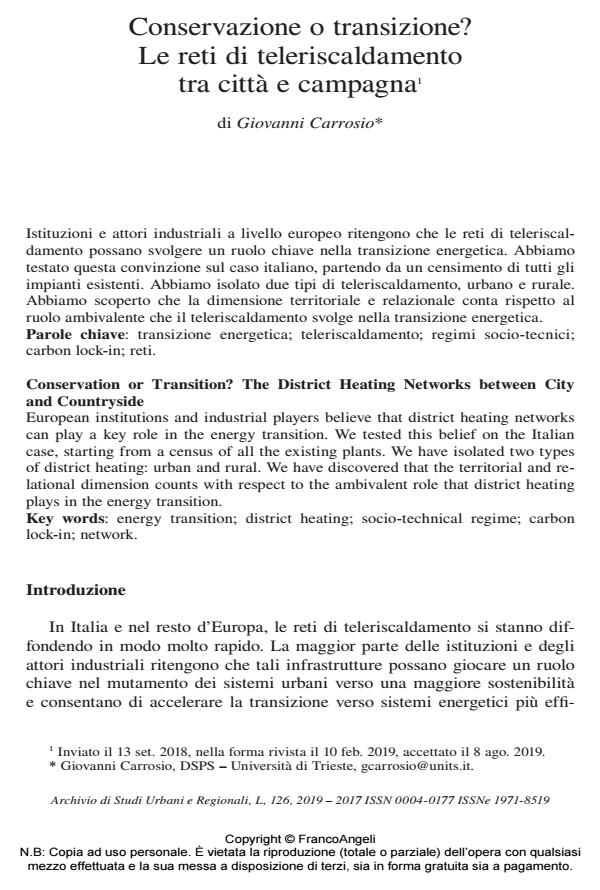Conservazione o transizione? Le reti di teleriscaldamento tra città e campagna
Titolo Rivista ARCHIVIO DI STUDI URBANI E REGIONALI
Autori/Curatori Giovanni Carrosio
Anno di pubblicazione 2019 Fascicolo 2019/126
Lingua Italiano Numero pagine 21 P. 32-52 Dimensione file 375 KB
DOI 10.3280/ASUR2019-126003
Il DOI è il codice a barre della proprietà intellettuale: per saperne di più
clicca qui
Qui sotto puoi vedere in anteprima la prima pagina di questo articolo.
Se questo articolo ti interessa, lo puoi acquistare (e scaricare in formato pdf) seguendo le facili indicazioni per acquistare il download credit. Acquista Download Credits per scaricare questo Articolo in formato PDF

FrancoAngeli è membro della Publishers International Linking Association, Inc (PILA)associazione indipendente e non profit per facilitare (attraverso i servizi tecnologici implementati da CrossRef.org) l’accesso degli studiosi ai contenuti digitali nelle pubblicazioni professionali e scientifiche
Istituzioni e attori industriali a livello europeo ritengono che le reti di teleriscaldamento possano svolgere un ruolo chiave nella transizione energetica. Abbiamo testato questa convinzione sul caso italiano, partendo da un censimento di tutti gli impianti esistenti. Abbiamo isolato due tipi di teleriscaldamento, urbano e rurale. Abbiamo scoperto che la dimensione territoriale e relazionale conta rispetto al ruolo ambivalente che il teleriscaldamento svolge nella transizione energetica.
Parole chiave:Transizione energetica; teleriscaldamento; regimi socio-tecnici; carbon lock-in; reti.
Giovanni Carrosio, Conservazione o transizione? Le reti di teleriscaldamento tra città e campagna in "ARCHIVIO DI STUDI URBANI E REGIONALI" 126/2019, pp 32-52, DOI: 10.3280/ASUR2019-126003